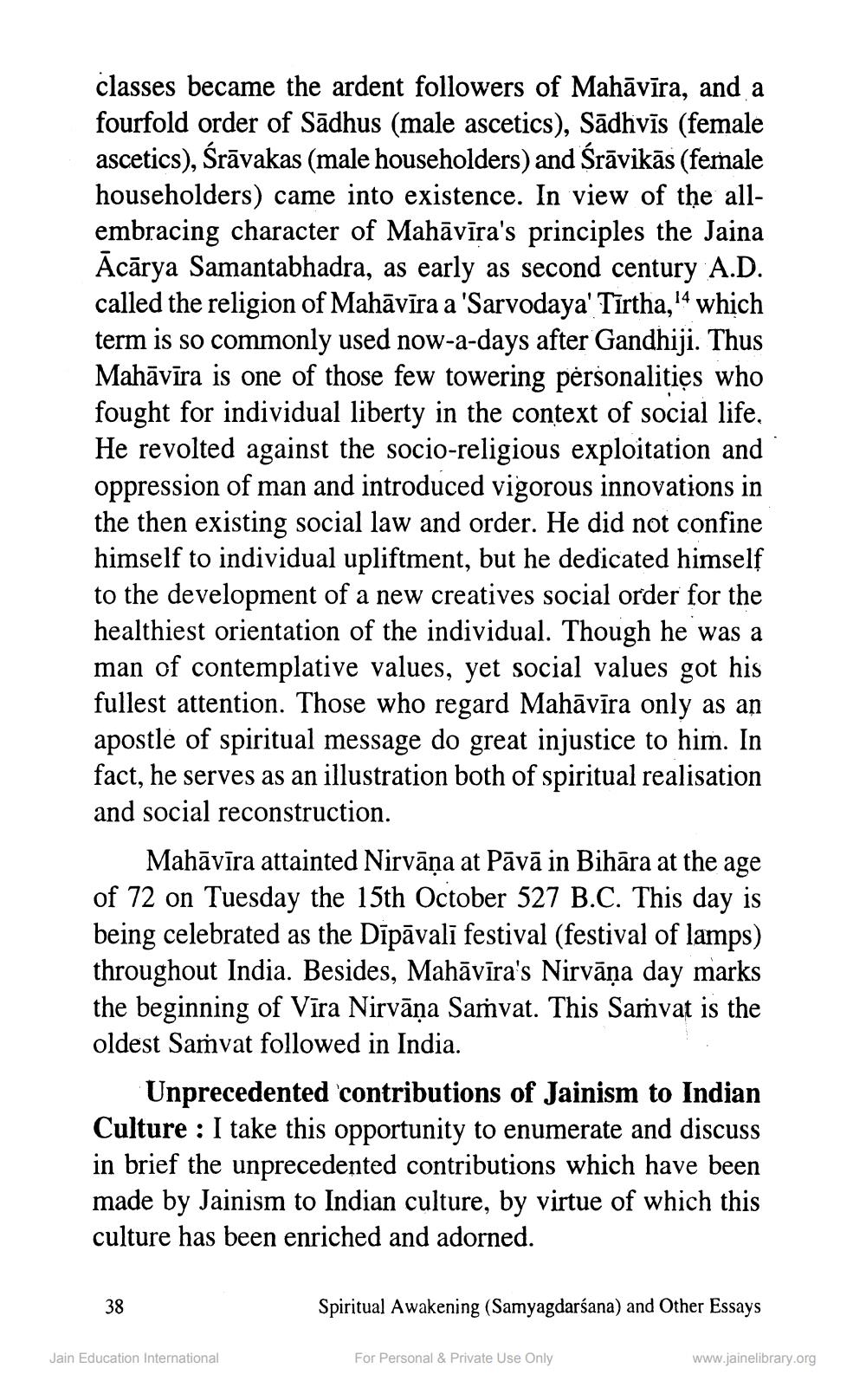________________
classes became the ardent followers of Mahāvīra, and a fourfold order of Sādhus (male ascetics), Sādhivīs (female ascetics), Śrāvakas (male householders) and Śrāvikās (female householders) came into existence. In view of the allembracing character of Mahāvīra's principles the Jaina Ācārya Samantabhadra, as early as second century A.D. called the religion of Mahāvīra a 'Sarvodaya' Tīrtha,l4 which term is so commonly used now-a-days after Gandhiji. Thus Mahāvīra is one of those few towering personalities who fought for individual liberty in the context of social life, He revolted against the socio-religious exploitation and oppression of man and introduced vigorous innovations in the then existing social law and order. He did not confine himself to individual upliftment, but he dedicated himself to the development of a new creatives social order for the healthiest orientation of the individual. Though he was a man of contemplative values, yet social values got his fullest attention. Those who regard Mahāvīra only as an apostle of spiritual message do great injustice to him. In fact, he serves as an illustration both of spiritual realisation and social reconstruction.
Mahāvīra attainted Nirvāņa at Pāvā in Bihāra at the age of 72 on Tuesday the 15th October 527 B.C. This day is being celebrated as the Dīpāvali festival (festival of lamps) throughout India. Besides, Mahāvīra's Nirvāņa day marks the beginning of Vīra Nirvāna Samvat. This Samvat is the oldest Samvat followed in India.
Unprecedented contributions of Jainism to Indian Culture : I take this opportunity to enumerate and discuss in brief the unprecedented contributions which have been made by Jainism to Indian culture, by virtue of which this culture has been enriched and adorned.
38
Spiritual Awakening (Samyagdarśana) and Other Essays
Jain Education International
For Personal & Private Use Only
www.jainelibrary.org




